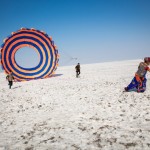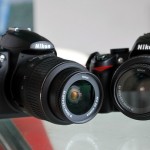In this digital age, only a certain few still use dark rooms to process images.
The ease of using your computer to manipulate photos is welcomed by the community. Photoshop, Lightroom and Aperture are just some of the most used software in processing images. Despite the prevalence of a variety of software, there is still a technical barrier that aspiring photoshop wizards can’t break. Because of that, they rely on one click post-processing and various filter applying programs to do the work. Ultimately though, it’s much better if you know what to do to your images so you can fine tune and apply your own creative touch them. Below are some basics concepts to help you understand the core of post processing. These are not detailed step by step instruction. Rather, they are the basic concepts which can help you understand what you can achieve in post processing and build to that knowledge.
Sharpness and Blur
As the name suggests, they either sharpen or blur a photograph. So why would someone blur a photograph? This tool is used to further enhance bokeh and to make the depth of field narrower. Some use it to make certain objects less noticeable. Be careful though since the blur tool can be quite ugly if not used right. The blur of this tool is quite different from the bokeh of your lens. So don’t rely on this tool if you want to enhance your len’s bokeh. If you really want beautiful bokeh, getting a dedicated lens with a wide opening is a must.
The sharpen tool is commonly used to bring out mode details in certain objects. For example, you want the textures of the wood to be more aggressive, you can use the sharpen tool to get that effect. Caution though since too much sharpening will produce artifacts that are noticeable. This is also used in a whole photograph to get it pop out more.
Cropping
As much as every photographer try to get the framing right in-camera, it’s inevitable that you get shots that need cropping. This is very useful in changing how your image looks. For example, the rule of thirds can be applied to almost any image by just cropping. You can also change the orientation of your image, landscape to portrait and vice versa.
But cropping has its limitations. This is mainly affected by your camera and lens. You can’t be too aggressive in cropping if you don’t have enough megapixels. If you reach a pixel level crop, noise would be much evident. And if your lens is not good enough, you might notice some sort of sharpness degradation.
White Balance and Exposure
One of the major reasons photographers shoot RAW and not JPEG is because of these two variables. When shooting JPEG, post processing is done in-camera. The settings and modifications to the image are permanently applied to the final output. On the other, shooting RAW gives you much more freedom. The pictures come out with so much flexibility since no permanent post-processing is applied to the image.
So what does White Balance and Exposure got to do with shooting in RAW? Since the image is not yet processed, you can easily play around with these two. Yes, you can also do White Balance and Exposure modification in a JPEG image but the amount of data you can retrieve is nowhere near compared to a RAW file.
Dodge and Burn
Like most digital post processing tools, dodge and burn originated in the darkroom. When using this in the dark room, photographers specifically let or hinder light to expose the film. It was quite an intensive process and doing something wrong can be disastrous. Fortunately now we only have to click a couple of buttons and the effect is easily applied or reversed.
Using this is a good way to divert attention to unwanted parts of your photograph. If blurring and cropping is not enough, dodge and burn can shift the focus on the subject via darkening or highlighting specific parts of your photograph. This tool is commonly used in landscape photography and, believe it or not, high end portrait retouching.
Heal and Clone
The easiest way to remove unwanted parts of your photograph would be by the use of healing and cloning. Adobe’s Photoshop is constantly updating this technology to make it easier for photographers. The heal tool uses a special algorithm to replace targeted parts with data near it. For example you’re trying to remove a blemish the tool will pick pixels around the blemish so it when it replaces the blemish it would seem like it is actually part of the image.
The Clone Tool works like the Heal Tool but instead of getting the data around the targeted area, the Clone Tool lets you choose what are you would like to get the pixels from. This can be useful if the surrounding area is unusable.






